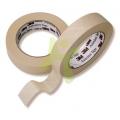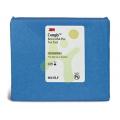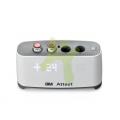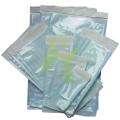Reference Info
Recommended practices for operation of Bench-top steam sterilizers(Autoclaves) at the clinic
According to Guide to Infection Control In Clinical Setting (Last update: July 2023), issued by Centre for Health Protection, Hong Kong, please refer the following recommended practices for operation of Bench-top steam sterilizers at the clinic.
It is suggested that sterilizers(Autoclaves) should be located in treatment room/specific room away from traffic which without discharging steam/vapor into the waiting area of the clinic.
- Sterilizer(Autoclave) must be operated by staff who is/are well-trained/adequately instructed about use of the assigned device. The operating staff should record the details of each load (eg. sterilized items, mechanical indicators etc) on the log book.
- Mechanical indicators, chemical indicators and biological indicators should be conducted regularly and all relative results to be recorded properly as a routine monitoring for the sterilization.
- The manufacturer operation manual/recommendations should be followed at all times
At the constant temperature, sterilization times of each load will be varied depending on the sterilizer type and type of item to be sterilized (eg. metal, rubber, plastic, items with lumens as well as whether those is wrapped or not). Furthermore, the design of the particular sterilizers to be impact on the exposure times of each load. So the manufacturer operation manual and recommendations shall be followed at all times.
Refer to Guide to Infection Control In Clinical Setting (Last update: July 2023) and Guidelines on Infection Control Practice in the Clinic Settings of Department of Health of Centre for Health Protection, Hong Kong , the common temperature and time parameters for various types of load are listed below:
| Type of sterilizers | Type of Items | Exposure time | Drying time |
|---|---|---|---|
| Gravity displacement (Type N sterilizer) |
Unwrapped nonporous instrument | 3mins. (132℃) | 0-1min |
| Dynamic-air-removal e.g., prevacuum (Type B / S sterilizer) |
Wrapped instrument | 4mins (132℃) | 20-30mins |
*All the above information is for reference only. For further details, please refer to the official website of Centre for Health Protection
Monitoring of sterilization
In order to ensure the effectiveness of the sterilization process, the following tests should be conducted and all of the regarding results should be recorded properly.
| 1. Mechanical Indicators of the sterilizer | Cycle time, temperature, and pressure as displayed on the sterilizer gauges for each instrument load. |
| 2. Chemical Indicator | External chemical indicator: Autoclave tape/steam indicator tape are affixed on the outside of each instrument pack to identify whether the package has been processed through a sterilization cycle; Internal chemical indicator: Steam chemical integrator should be included inside of each pack to verify sterilant penetration. |
| 3. Biological Indicator(BI)/spore tests | Biological Indicators(BI) with spore vials should be conducted at least once a week to monitor the effectiveness of sterilizer and the BI result should be recorded. It is suggested that BI with spore vials should be placed near to the drain and the front of bottom section of the chamber. |
| 4. Steam Penetration Test * for dynamic air removal sterilizer only |
Bowie-Dick test/Helix test should be conducted before the first processed load of the day. |
* Do not use the processed items from the implicated load if any of the above tests failed. Please stop using the sterilizer and redo the regarding test(s) till the test result(s) fulfill the requirement.
Reminder
The sterilizers should be checked and serviced annually and as necessary.
Upon installation, relocation, after major repair/sterilization failure has occurred, it is recommended the sterilizer should be checked based on the manufacturer instruction before service. Moreover three consecutive empty cycles should be run with both Chemical and Biological indicators. Each empty cycle with regarding indicators should be done one after another. *For dynamic air removal sterilizers (Class B sterilizers), three consecutive empty cycles should be run with both Chemical and Biological indicators as well as the Bowie-Dick test or Helix test. The sterilizer is not put back in use till both the Chemical and Biological indicators show a correct end-point responses.
Type of water to be used in the sterilizer and the schedule of water refill/changing should follow the recommendation/instruction of manufacturer.
Suggested products listed below:

3M™ 1322 Comply™ Lead Free Steam Indicator Tape

3M™ 1243A Comply™ (SteriGage™) Chemical Integrator

3M™ 00135LF Bowie-Dick Plus Test Pack

3M™ 1492V Attest™ Super Rapid Readout Biological Indicator

3M™ 490M Attest™ Mini Auto-Reader

Winner Self-seal sterilization pouch
*All the above information is for reference only. For further details, please refer to the official website of Centre for Health Protection
Sterile storage
Sterile items should be stored in an environment where is dust-free with protection against of moisture, insects, and extremes of temperature and humidity. The shelf life of a packaged sterile item to be according to its wrapper, storage condition and the conditions during transport, the amount of handling, and other events(Moisture). Referring to Guide to Infection Control In Clinical Setting (Last update: July 2023) of Centre for Health Protection, Hong Kong, the recommended practices as below.
Disposable items
Handling disposable items shall be followed the manufacturer instruction at all times
Reprocessed reusable sterile medical devices
It should be stored in an environment under 24°C and relative humidity level below 70%
Sterile items should be stored in closed cabinet/drawers with limited access which to be well-separated from non-sterilized items and potential source of contamination.
Label each sterilize item with expiration date, its content, identification of the sterilizer, cycle number, date of sterilization, name the staff who handle the package.
To ensure the sterile items to be used before expired, the effective stock management system is required eg stock to be used by "first in, first out"
Check the package and its expiration date before use. Please reprocess the pack once it is past expiration date, any damage of packaging (eg crushed, bent, folded, compressed or punctured)
*All the above information is for reference only. For further details, please refer to the official website of Centre for Health Protection
